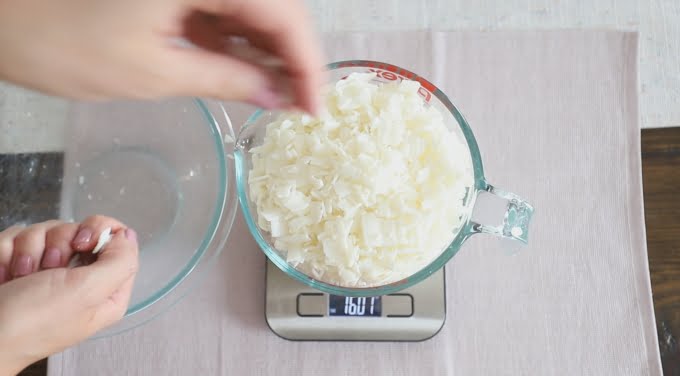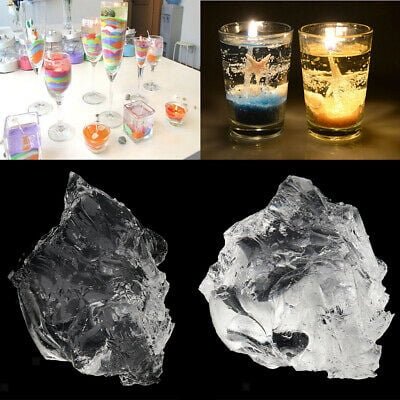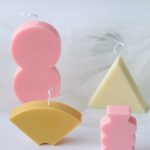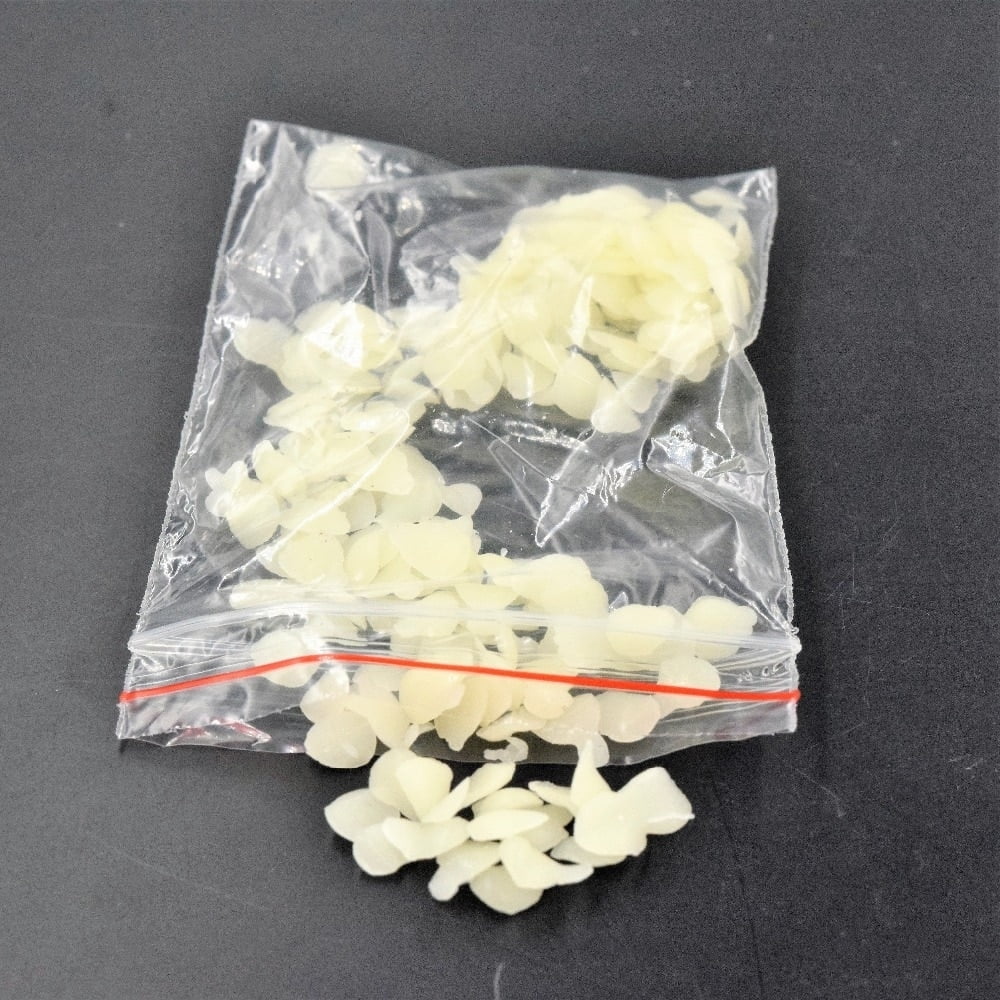Candle making is a popular and enjoyable hobby for many people, offering the opportunity to create personalized, decorative, and fragrant candles. However, it’s important to ensure that the containers used in this process are safe to prevent any potential accidents or hazards. In this article, we will explore the key considerations for making candles in safe containers, including the importance of using the right materials, understanding candle wax and wicking, and best practices for ensuring overall safety.
When it comes to candle making, one of the crucial aspects to consider is the type of container used. Using safe containers not only helps in preventing accidents but also ensures that your candles burn evenly and efficiently. In this article, we will delve into the various factors that impact the safety of candle containers and how to make informed decisions when choosing them.
Understanding the properties of candle wax and wicking is essential for creating safe and effective candles. We will discuss how different types of wax and wicks can affect your choice of container and ultimately influence the safety of your homemade candles. Additionally, we will provide valuable insights on how to properly secure the wick in the container to minimize potential risks.
Importance of Using Safe Containers
When it comes to making candles, the use of safe containers is of utmost importance. Not only does a safe container prevent accidents and ensure the overall safety of the candle-making process, but it also plays a crucial role in the quality and longevity of the finished product. Here are some important reasons why using safe containers for making candles is essential:
- Protection from Fire Hazards: Safe containers provide a secure and stable base for the candle, reducing the risk of tipping over and causing a fire hazard. With a properly chosen container, you can minimize the chances of accidents and enjoy peace of mind while burning your candles.
- Containment of Wax and Fragrance: Using safe containers ensures that any melted wax or fragrances are contained within the vessel, preventing spills and mess. This not only keeps your workspace clean but also prevents any potential damage to surrounding surfaces or materials.
- Longevity and Quality: Safe containers help in preserving the quality and lifespan of your candles. A sturdy and heat-resistant container will withstand high temperatures without compromising its structural integrity, allowing you to enjoy your candles for longer periods.
In summary, using safe containers for making candles is crucial for ensuring safety, protecting against fire hazards, containing wax and fragrance, as well as maintaining the longevity and quality of your finished products. By selecting the right container for your candle-making endeavors, you can create beautiful, safe, and long-lasting candles that bring warmth and ambiance to any space.
Understanding Candle Wax and Wicking
Candle wax and wicking are two essential elements in the candle-making process. Understanding the properties of different types of wax and the importance of choosing the right wick is crucial in creating safe and effective candles.
When it comes to candle wax, there are several options to choose from, including paraffin wax, soy wax, beeswax, and more. Each type of wax has its own unique characteristics and burning properties. For example, soy wax is known for its clean-burning nature, while paraffin wax has a higher fragrance throw. It is important to consider these factors when selecting the wax for your candles, as they can impact the overall safety and performance of the final product.
In addition to the type of wax used, the wicking also plays a critical role in ensuring that candles burn safely. The size and material of the wick can directly affect how the candle burns, including its rate of consumption and the size of the flame.
Choosing a wick that is too large for the container can result in an excessively hot flame, while a wick that is too small may cause tunneling or uneven burning. This underscores the importance of carefully considering both the wax and wicking when making candles in safe containers.
| Candle Wax | Wicking |
|---|---|
| Paraffin Wax – high fragrance throw | Size and material impact burn |
| Soy Wax – clean-burning | Too large = hot flame; too small = tunneling |
| Beeswax – natural air purifier | Directly affects rate of consumption |
Choosing the Right Container for Candle Making
When it comes to choosing the right container for candle making, there are a few key factors to consider. The first and most important consideration is the material of the container. It’s crucial to use a heat-resistant and non-flammable material for your candle containers, such as glass, metal, or ceramic. These materials will ensure that the container can withstand the heat of the burning candle without posing a fire hazard.
Another important factor to consider when choosing a container for candle making is the size and shape. The size of the container should be appropriate for the amount of wax you plan to use, leaving enough room for proper burning and melting. Additionally, consider the shape of the container in relation to how it will affect the burn pool and overall aesthetic appeal of the candle.
Safely Securing Your Wick in the Container
Once you have chosen an appropriate container for your candle, it’s essential to properly secure the wick. This can be done by using adhesive tabs or hot glue to attach the wick to the bottom center of the container before pouring in the wax. Ensuring that the wick is straight and centered will help promote an even burn and prevent potential safety hazards.
Choosing Containers With Proper Ventilation
It’s also important to choose containers that provide proper ventilation for your candles. Without adequate ventilation, candles may burn too hot or produce excessive smoke, which could pose a safety risk. Look for containers with wide openings or those specifically designed for candle making to allow proper air flow during burning.
By carefully considering these factors when choosing a container for candle making, you can help ensure that your candles are not only beautiful but also safe for use in any environment.
Safety Considerations When Making Candles
When it comes to making candles, safety should always be a top priority. One of the most important aspects of ensuring the safety of your candle-making process is using the right containers. Using safe containers for candle making can help prevent accidents such as fires and spills, and can also contribute to the overall quality and longevity of your candles.
The first step in choosing a safe container for candle making is to ensure that it is made of a material that can withstand the heat of the melted wax. Glass, tin, and heat-resistant plastics are popular choices for candle containers. It’s important to avoid using materials that may crack or break when exposed to high temperatures, as this can lead to dangerous situations.
In addition to the material of the container, it’s also crucial to consider its size and shape. The container should be able to hold the amount of wax you intend to use without overflowing or spilling. It should also have a stable base and be tall enough to provide proper support for the wick. Lastly, always remember to place your candle-making containers on a flat, heat-resistant surface while working with hot wax.
| Container Material | Suitable Options |
|---|---|
| Glass | Heat-resistant glass jars or containers made specifically for candle making |
| Tin | Tin cans or tins designed for candle use |
| Heat-resistant Plastics | Containers specifically labeled as heat-resistant |
Tips for Properly Securing the Wick in the Container
When it comes to making candles in safe containers, one of the most important aspects to consider is properly securing the wick. The way in which the wick is secured can impact the overall safety and effectiveness of the candle. Here are some tips for properly securing the wick in the container:
Choose the Right Size Wick
The size of the wick plays a crucial role in how well it burns and how it should be secured. It’s important to choose a wick that is appropriate for the size and type of candle you are making. If the wick is too small, it may not burn properly, while a wick that is too large could lead to safety issues such as excessively high flames or overheating of the container.
Use Proper Adhesive
Securing a wick in a container requires using an appropriate adhesive that can withstand high temperatures. It’s essential to use a heat-resistant adhesive designed specifically for candle-making to ensure that the wick stays in place throughout the burning process without releasing harmful chemicals or compromising safety.
Secure Wick at Center
In order for a candle to burn evenly and safely, it’s important to securely anchor the wick at the center of the container. This ensures that as the wax melts, it maintains an even pool around the wick and prevents any potential hazards such as uneven burning or flickering flames.
By following these tips for properly securing the wick in your container when making candles, you can ensure that your candles burn safely and effectively. It’s important to pay attention to these details in order to create high-quality candles while prioritizing safety for yourself and others who will enjoy your creations.
Common Mistakes to Avoid When Using Containers for Candles
When it comes to making candles, using the right container is crucial for ensuring the safety of the process and the final product. Here are some common mistakes to avoid when using containers for candles:
1. Using flammable or non-heat resistant containers: One of the most important considerations when choosing a container for candle-making is to ensure that it is made of a material that can withstand heat. Using flammable materials such as plastic or thin glass can lead to accidents and even fires. Instead, opt for heat-resistant materials such as glass jars, tin containers, or ceramic vessels.
2. Overfilling the container: Overfilling the container with wax can lead to spillage and overflow when the candle is lit. This not only poses a fire hazard but also makes a mess. Always leave at least half an inch of space between the surface of the wax and the top of the container to prevent any potential mishaps.
3. Neglecting to secure the wick properly: A poorly secured wick can result in uneven burning and even cause the candle to tip over in its container. To ensure a safe and steady burn, always use a wick holder or centering device to keep the wick in place as you pour the wax into the container.
By avoiding these common mistakes when using containers for candles, you can make your candle-making process safer and more enjoyable. Remember that safety should always be your top priority when working with hot wax and open flames. With proper precautions and attention to detail, you can create beautiful, fragrant candles in safe containers without any worries about potential hazards.
Ensuring the Overall Safety of Your Candle-Making Process
When it comes to ensuring the overall safety of your candle-making process, there are several important factors to consider. One of the most crucial elements is using safe containers for your candles. Choosing the right container can make a significant difference in the safety and quality of your homemade candles.
The first consideration when selecting a container for candle making is ensuring that it is heat resistant. This is especially important if you plan to use the candle for an extended period or if you are making larger candles. Heat-resistant containers will not crack or shatter when filled with hot wax, reducing the risk of accidents and injuries.
In addition to being heat resistant, it’s important to choose a container that is non-flammable. This will minimize the risk of fire hazards when the candle is burning. Glass, metal, and ceramic containers are popular choices for candle making due to their non-flammable properties. By using these types of containers, you can create a safer environment for enjoying your homemade candles without worry of accidental fires or other safety concerns.
Conclusion
In conclusion, it is essential to prioritize safety when making candles in a safe container. Understanding the importance of using safe containers, choosing the right materials for candle wax and wicking, and considering safety measures are crucial in ensuring a successful candle-making process.
When selecting a container for candle making, it is important to choose a heat-resistant and non-flammable material that can withstand the heat of the melted wax and the burning wick. It is also important to properly secure the wick in the container to prevent it from shifting or leaning as the candle burns. Additionally, avoiding common mistakes such as overfilling the container with wax or using unsuitable materials for containers can help ensure overall safety.
By following best practices for making candles in safe containers, such as carefully securing the wick, choosing appropriate materials, and being mindful of safety considerations, you can enjoy the art of candle making while prioritizing safety every step of the way. Remember that safety should always come first when indulging in this creative and enjoyable craft.
Frequently Asked Questions
What Containers Are Safe to Make Candles In?
Containers that are safe to make candles in include glass jars, metal tins, and ceramic vessels. It’s important to use containers specifically designed for candle-making to ensure they can withstand the heat of the wax and flame.
What Is Safe to Put in Homemade Candles?
When making homemade candles, it’s safe to use natural materials such as soy wax, beeswax, and essential oils for fragrance. Cotton or wooden wicks are also safe options. Avoid using synthetic fragrances or dyes that may release harmful chemicals when burned.
What Can You Use as a Candle Vessel?
There are many options for candle vessels, including mason jars, teacups, terracotta pots, and even coconut shells. It’s important to consider the material of the vessel and ensure it can withstand the heat of the candle. Always practice caution when using unconventional vessels for candle-making.

Welcome to my candle making blog! In this blog, I will be sharing my tips and tricks for making candles. I will also be sharing some of my favorite recipes.





